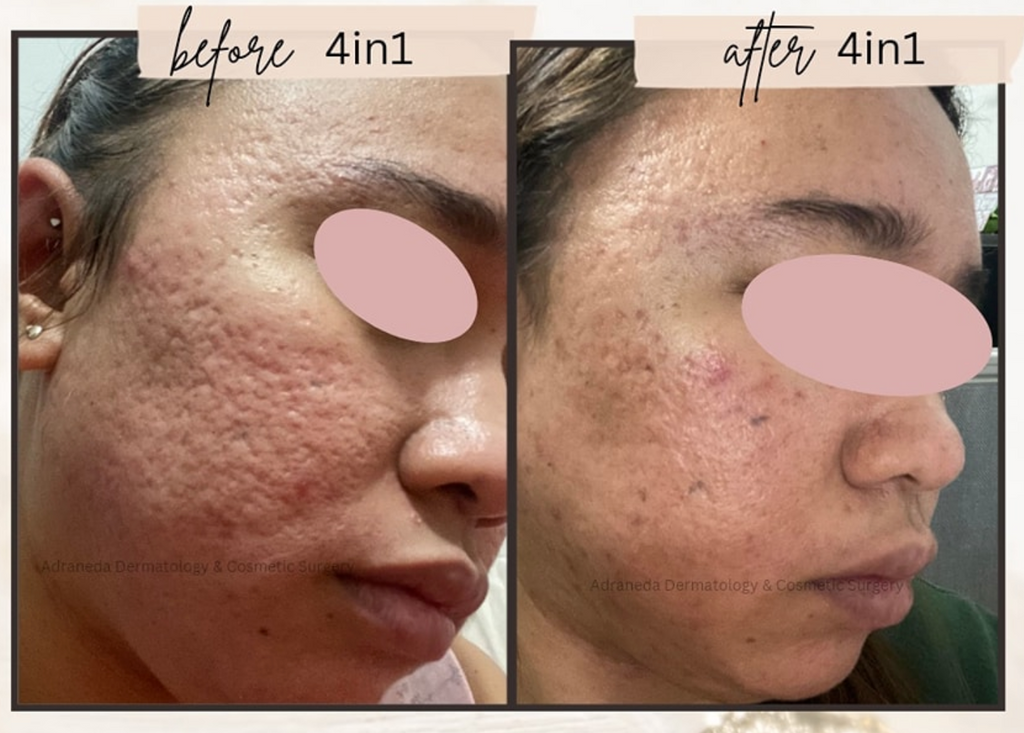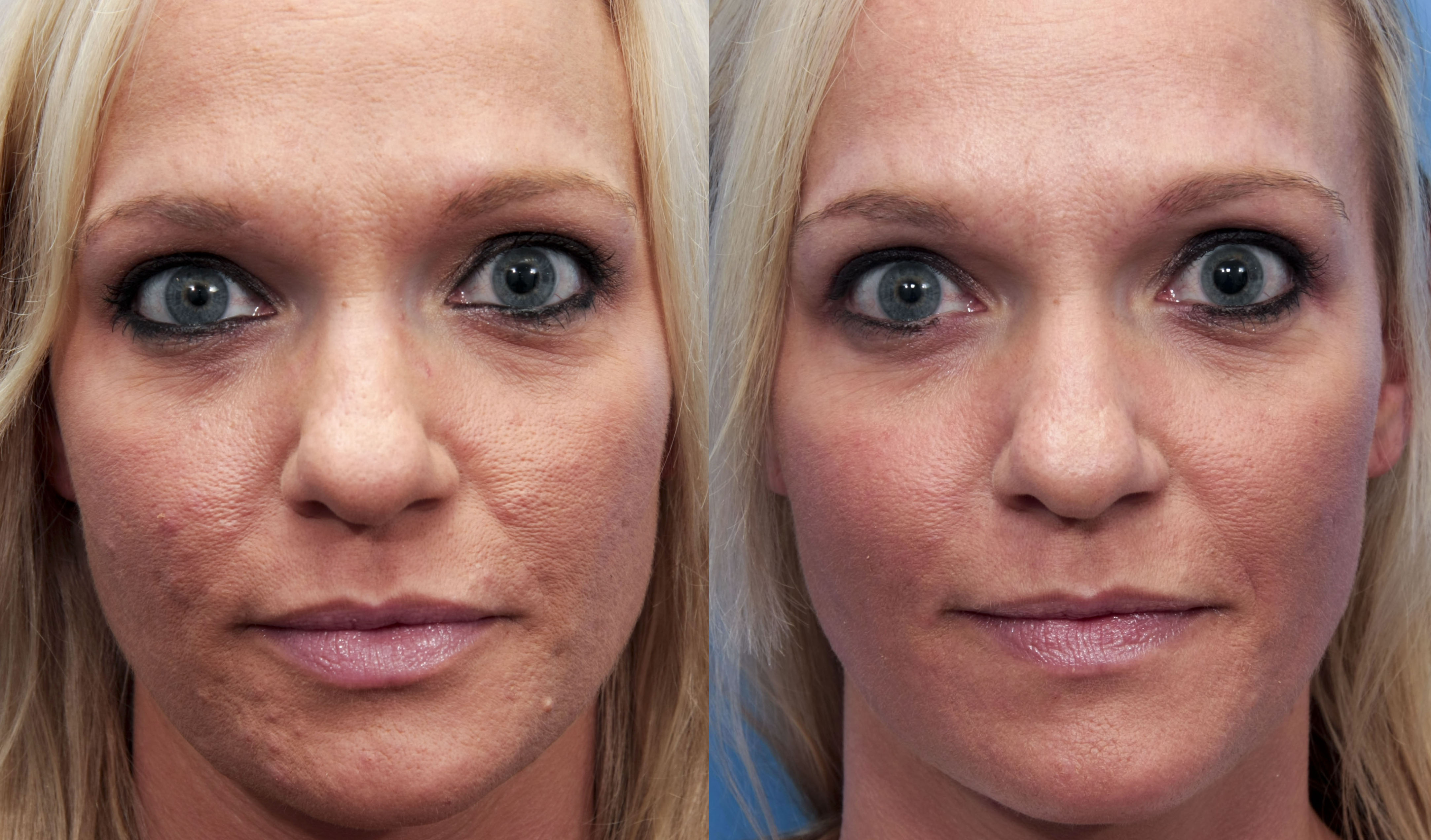Sensitive Skin? Find the Right Acne Scars Treatment for Your Demands
Sensitive Skin? Find the Right Acne Scars Treatment for Your Demands
Blog Article
Discovering Skin Problem: Treating and identifying Acne Scars for Healthier Skin
Acne scars represent a significant issue for individuals seeking to maintain healthy skin, as they can affect both appearance and self-esteem. Understanding the various sorts of scars, from atrophic to hypertrophic, is essential for identifying appropriate treatment options. While specialist treatments like chemical peels and microneedling can be reliable, the relevance of customized care plans can not be overstated. Moreover, preventative actions play a crucial role in decreasing future scarring. As we explore these facets, one have to think about exactly how the right strategy can cause transformative results.
Comprehending Acne Marks

The body's natural healing process can lead to either atrophic marks, which show up as depressions in the skin, or hypertrophic scars, which are raised and arise from overproduction of collagen. Additionally, the mental toll of acne scars should not be ignored; many individuals report feelings of humiliation, anxiety, and lowered self-worth. This emotional burden can affect social interactions and general high quality of life.
Resolving acne marks calls for a comprehensive understanding of their formation and impact. Awareness of the potential for long-term consequences associated with untreated scars can encourage people to look for proper therapies. Early intervention and effective management strategies can considerably improve skin look and boost emotional durability, highlighting the significance of understanding the intricacies bordering acne scars.
Types of Acne Marks
Acne marks can be categorized into distinct kinds, each displaying distinct qualities and requiring details therapy methods. acne scars treatment. The main types of acne marks consist of atrophic, hypertrophic, and keloid scars

Hypertrophic scars, in comparison, are raised above the skin level and are the outcome of too much collagen production during the healing procedure. They commonly remain within the limits of the initial acne sore. Keloid marks are comparable but extend beyond the initial injury website, creating bigger, raised areas that can be painful or itchy.
Understanding these sorts of scars is necessary for picking ideal therapy alternatives. Different marks might react better to specific therapies, such as laser treatments, fillers, or surgical interventions, emphasizing the importance of a tailored approach to acne scar management.
Determining Your Marks
When evaluating the look of your skin, it is crucial to precisely determine the kind of marks present, as this will certainly educate one of the most reliable therapy strategy. Acne marks usually fall under two groups: hypertrophic and atrophic marks. Atrophic marks, which are one of the most typical, look like anxieties or indentations on the skin. These can even more be classified into ice-pick marks, boxcar marks, and rolling scars, each displaying distinct features and needing different methods for analysis.
Hypertrophic marks, on the other hand, are raised and occur due to excessive collagen production during the healing process. Recognizing the details attributes of your marks-- such as texture, size, and depth-- is crucial for proper identification (acne scars). Additionally, consider the circulation of marks throughout your skin, as this can indicate the severity and period of the acne condition
Involving with a dermatologist can offer valuable insights right into the nature of your scars, helping in the distinction in between numerous kinds. A complete understanding of your marks will eventually bring about a much more customized and reliable treatment plan, guaranteeing a more clear and healthier skin tone.
Treatment Alternatives Available
Identifying the specific kind of acne marks present on your skin prepares for discovering efficient treatment choices. Usual sorts of acne scars consist of atrophic (clinically depressed), hypertrophic (raised), and post-inflammatory erythema.
For atrophic scars, choices such as chemical peels, microneedling, and laser resurfacing are extensively utilized. Chemical peels off use acids to remove the outer layer of skin, promoting new cell growth.
Hypertrophic scars can be treated with corticosteroid injections to squash the scar or laser therapy to minimize inflammation and improve appearance. Silicone gel sheets and stress dressings may also help in taking care of increased scars.
Additionally, dermal fillers can briefly fill out anxieties from atrophic marks, while medical excision may be suitable for severe instances. Each treatment option has its benefits and factors to consider, making it important to talk to a skin doctor. They can provide individualized referrals based on the type and seriousness of your scars, in addition to your skin type and total health and wellness.
Tips for Prevention
Effective prevention techniques can significantly reduce the likelihood of developing acne marks. Using non-comedogenic items helps stop clogged pores, which can intensify acne.
Preventing the urge to choose or pop acne lesions is critical, as this can result in much deeper skin damage and boost the danger of scarring. Instead, think about making use of a cool compress or over-the-counter treatments to reduce swelling and redness.
Sun defense is one more crucial element of avoidance; ultraviolet (UV) acne and acne scars treatment rays can dim marks and impede the recovery process. Using a broad-spectrum sun block with at the very least SPF 30 daily can protect the skin and advertise also healing.
Last but not least, preserving a well balanced diet plan abundant in minerals, antioxidants, and vitamins supports skin wellness and healing. Staying hydrated and managing stress and anxiety degrees can also play a significant function in reducing acne flare-ups. By implementing these approaches, people can considerably decrease their opportunities of creating acne marks.
Final Thought
In verdict, understanding and determining acne scars is necessary for effective treatment and achieving healthier skin. Numerous kinds of acne marks, including atrophic and hypertrophic scars, necessitate details interventions customized to private demands.
The body's all-natural healing procedure can result in either atrophic marks, which show up as clinical depressions in the skin, or hypertrophic scars, which are increased and result from overproduction of collagen. They are additional divided right into three subtypes: ice choice scars, boxcar marks, and rolling scars. Acne marks generally fall into two categories: atrophic and hypertrophic marks. These can better be identified right into ice-pick scars, boxcar scars, and rolling marks, each displaying unique qualities and requiring various strategies for evaluation.
Different types of acne marks, including atrophic and hypertrophic marks, demand particular interventions customized to private needs.
Report this page